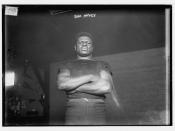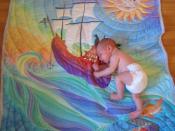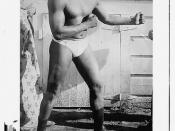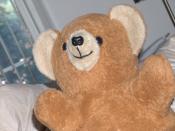Angela Harsh Imagine a child, about 4- 8 years old, sitting in a court room. Probably nervous about all the attention, and also confused. The question that I'm asking is: are child witnesses reliable in court? About 1 in every 40 children will be involved in a court case. There have been several studies done to find out whether child witnesses should be used, most of which have concluded them to be unreliable.
First, lets see if they are psychologically capable of telling the streight truth. At age four, children often tell tall tales with little basis on fact, it is their peak age for imaginative verbalization. At age 5, their fanciful stories and exaggerations continue but they can start to distinguish real from make beleive. By age 5 1/2 there is less exageration then truthfullness. At age 6 a child will be untruthful to deny thoughts and evade blame, and by 7 there is less lying than age 6.
At age 8 children tell tales and boast but they know fact from fancy, but may just lie to see who will beleive him/her.
According to this, childrem 5 and younger usually don't know haw to tell the fact from fantasy so that would mean they couldn't be reliable in court.
People also argue that they can't be used in court because of the stress level. Which a lot of the time people try to reduce by putting the child behind a one way screen or video taping the childs testimony.
Stephen J. Ceci has conducted research on whether children can be coached in their answers. He had a character named Sam stone visit a daycare center.
Over the next ten weeks the children were interveiwed four times. The first time they were asked the simple question "Did sam do anything with a teddy bear or a book?"ÃÂ (he hadn't) and only 10% said that Sam had anything to do with a beook or a teddy bear.
A second group was presented a stereotype of Sam before they met. The teacher told them a story about him that implied that he was clumsy. The Stereoping had an effect on the 3 to 4 year olds. 42% claimed Sam Stone ripped the book or soiled the teddy bear in responce to suggestion.
Of the children 19% claimed that they saw Sam Stone do the misdeeds.
Another group of preschoolers were exposed to A "Suggestion Condition."ÃÂ It involved the provision of seggestion questions. The children were not given any stereo types about Sam stone after the interview. During the interview they asked questions like "Rember that time Sam Stone Visted your class room and spilled chocolate on the white teddy bear?"ÃÂ They asked the children if they thought he did it on purpose or if it was an accident. They also asked "When Sam Stone ripped the book was he being silly or was he angry?"ÃÂ 52% of the 3 to 4 years olds answers contained claims that sam stone was responible for one or both misdeeds.
Finally, 39 children were given a previsit stereotype and postvisit suggestive questioning. 72% claimed that Sam did one or both things. 44% said they actually saw it, and when challenged 21% still said it was true.
The childrens reports (thougrh false) were so beleivable that videos of them were presented to researches and clinicians who work in the area of childrens testimonial competence to see if they could tel the difference.
They did it at two conferences, the results were the same at both, most of them thought the kids were telling the truth.
The result of Dr. Ceci's experiments were that children are not a reliable witness and are easily coached. They are very beleivable possibly because they beleive it themselves. I am going to run a similar experiment to see for myself if the conclusion stands and that children should not be in the court room.





